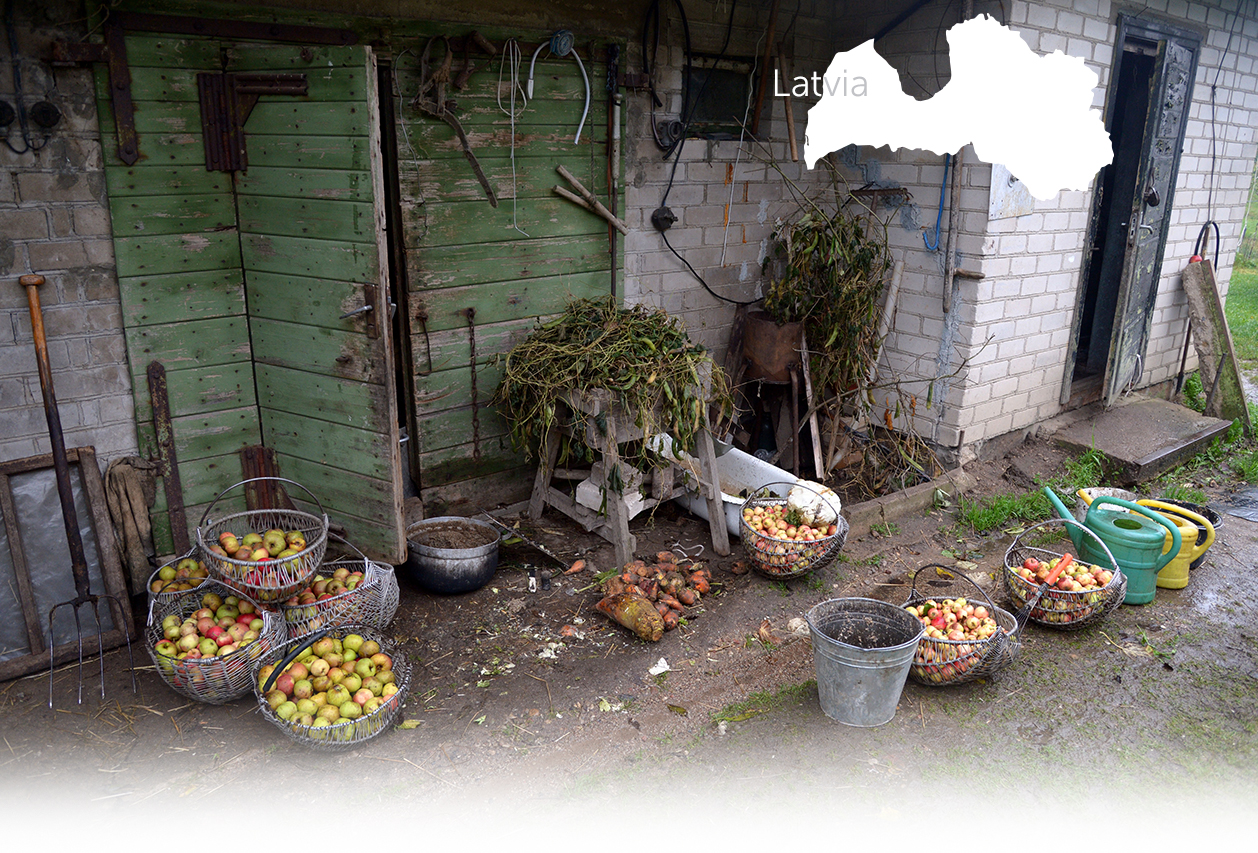

1 Killing site(s)
Ļeonarda F., born in 1934: "My mother knew that the Jews of Silène were being taken away to be killed, and she didn’t let us—her children—watch the column as it passed. She told me that the executioners had forced the Jews to undress, and that their clothes were confiscated after the massacre. Some local residents participated in the looting of Jewish homes. I remember that after the war, some of them wore shoes that had belonged to Jews. Their involvement in the looting of Jewish property later caused tensions within the community." (Testimony N°YIU173LV, interviewed in Vārpene, on October 5, 2022)
"During the Nazi occupation of the Silene district, German forces and their collaborators—described as traitors to their country—executed 189 Soviet citizens, all residents of the district. Among them were 186 Jews. The 186 Jewish victims were shot approximately 4 km from the town of Silene, near Smilga (Smiļģiņu) Lake, on a nearby peninsula. The victims were buried in four mass graves, measuring approximately 9 x 4 meters, 7 x 3 meters, and two graves of 7 x 5 meters each. The executions were carried out by local collaborators under the supervision of Police Chief Timberg. Prior to the massacre, the Jewish population had been arrested and confined in the local synagogue, where they were held without food or water. They were later informed that they would be transferred to Braslaw. The prisoners, unaware of their true fate, were marched in a guarded column toward Lake Smilga. Upon arrival at the peninsula—presented as a resting place—they were ambushed. German-led execution squads, hidden in the surrounding bushes, opened fire with machine guns. The mass execution took place on July 22, 1941, at 2 p.m." [Act drawn by State Extraordinary Soviet Commission (ChGK), on October 16, 1944, pp. 346-347; GARF 7021-93-111/Copy USHMM RG.22-002M]
Silene, known as Borovka until the mid-1930s, is located approximately 21 km (13 miles) southeast of Daugavpils. Jewish settlement in the town dates back to the era of the Dukes of Courland, with the community largely concentrated in the town center.
During the interwar period, when Latvia gained independence, many local Jews—seeking better employment opportunities—migrated to larger cities. As a result, the 1935 census recorded 189 Jewish residents in Silene, making up 18.5% of the town’s population.
The Jewish community played a vital role in the town’s economic and social life. Most were merchants, artisans, or professionals, including Dr. Louis Capenhagen. At the time, Jews operated 17 of the town’s 25 industrial businesses, which included workshops and a turpentine factory. Among the prominent community members was Abram Pinchusovich, a well-respected figure known for mediating with the authorities on behalf of local residents.
The younger generation of Jews in Silene was active in the town’s social and cultural life, including participation in Zionist movements. The community maintained two synagogues—one for Chasidim and one for Misnagdim—a heder (religious school for boys), and a mixed public school attended by children of various backgrounds.
Between 1932 and 1938, Rabbi Ariel Bermant served the community. He also fulfilled the duties of religious teacher and kosher slaughterer.
On the eve of the German occupation in 1941, a significant number of Jewish families still resided in Silene.
German troops occupied Silene on June 26, 1941. Soon after, a new administrative structure was established in the town, including the formation of a Latvian Self-Defense squad. In the initial weeks of the occupation, local Jews were still allowed to remain in their homes, but were forced to wear yellow stars as a means of identification and segregation.
On July 21, 1941, the entire Jewish population of Silene was rounded up and confined in the town’s large synagogue. The arrests were carried out by punitive squads from Riga and Ilūkste, assisted by members of the local Self-Defense unit. Immediately after the roundup, Jewish homes were looted and valuables confiscated by the punitive squads, who left the town the following day.
For approximately a week, the Jews were held in the synagogue under constant guard. They were allowed outside only briefly to drink water. Then, around July 28, 1941 (or July 22, according to Soviet archives), they were told they were being relocated to the Braslaw ghetto. Under this false pretense, the detainees were marched to a peninsula near Smilgu (Smiļģiņu) Lake, approximately 3 to 4 km from Silene. The elderly and children were transported there on 15 carts.
Upon arrival, the victims were ambushed and shot by a "volunteer" execution squad composed of members of the Self-Defense units from Silene, Skrudaliena, and Saliena. The shooters were positioned in hiding among the bushes, firing on the victims from concealment. Some Jews attempted to escape by jumping into the lake, but the vast majority were killed.
Following the massacre, local non-Jewish men were forcibly recruited to bury the bodies. They were made to dig four mass graves at the site of the killings. In total, 186 Jewish men, women, and children were murdered and buried during this Aktion.
In the aftermath, the belongings of the victims were looted and divided among the perpetrators and certain local residents.
In 1957, a monument was erected at the execution site. Until 1994, Jewish survivors and descendants from Silene gathered there annually to honor and commemorate the victims.
Do you have additional information regarding a village that you would like to share with Yahad ?
Please contact us at contact@yahadinunum.org
or by calling Yahad – In Unum at +33 (0) 1 53 20 13 17